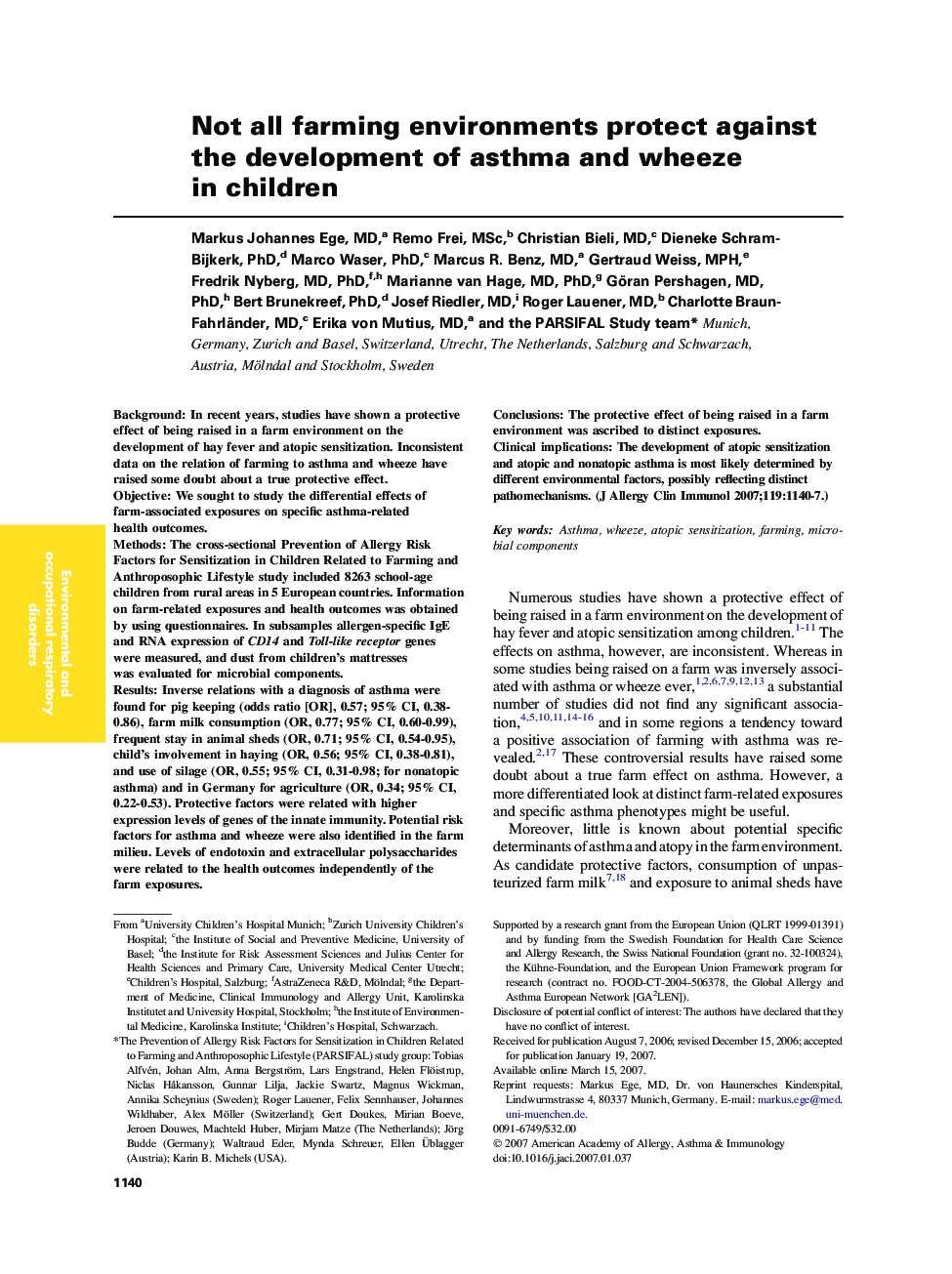| کد مقاله | کد نشریه | سال انتشار | مقاله انگلیسی | نسخه تمام متن |
|---|---|---|---|---|
| 3201792 | 1201962 | 2007 | 8 صفحه PDF | دانلود رایگان |

BackgroundIn recent years, studies have shown a protective effect of being raised in a farm environment on the development of hay fever and atopic sensitization. Inconsistent data on the relation of farming to asthma and wheeze have raised some doubt about a true protective effect.ObjectiveWe sought to study the differential effects of farm-associated exposures on specific asthma-related health outcomes.MethodsThe cross-sectional Prevention of Allergy Risk Factors for Sensitization in Children Related to Farming and Anthroposophic Lifestyle study included 8263 school-age children from rural areas in 5 European countries. Information on farm-related exposures and health outcomes was obtained by using questionnaires. In subsamples allergen-specific IgE and RNA expression of CD14 and Toll-like receptor genes were measured, and dust from children's mattresses was evaluated for microbial components.ResultsInverse relations with a diagnosis of asthma were found for pig keeping (odds ratio [OR], 0.57; 95% CI, 0.38-0.86), farm milk consumption (OR, 0.77; 95% CI, 0.60-0.99), frequent stay in animal sheds (OR, 0.71; 95% CI, 0.54-0.95), child's involvement in haying (OR, 0.56; 95% CI, 0.38-0.81), and use of silage (OR, 0.55; 95% CI, 0.31-0.98; for nonatopic asthma) and in Germany for agriculture (OR, 0.34; 95% CI, 0.22-0.53). Protective factors were related with higher expression levels of genes of the innate immunity. Potential risk factors for asthma and wheeze were also identified in the farm milieu. Levels of endotoxin and extracellular polysaccharides were related to the health outcomes independently of the farm exposures.ConclusionsThe protective effect of being raised in a farm environment was ascribed to distinct exposures.Clinical implicationsThe development of atopic sensitization and atopic and nonatopic asthma is most likely determined by different environmental factors, possibly reflecting distinct pathomechanisms.
Journal: Journal of Allergy and Clinical Immunology - Volume 119, Issue 5, May 2007, Pages 1140–1147